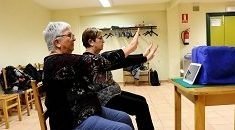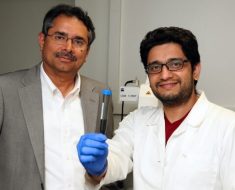Long-term memory of specific places is stored in the brain in so-called place cells. A team of neuroscientists headed by Dr. Andrea Burgalossi of the University of Tübingen’s Werner Reichardt Centre for Integrative Neuroscience (CIN) have now reprogrammed such place cells in free-roaming mice, by sending electrical impulses directly to individual neurons. After stimulation, these cells were reprogrammed in that their place-related activity switched to the location where the stimulation was performed. The study is now being published in Cell Reports.
How do we know what happened to us yesterday, or last year? How do we recognize places we have been, people we have met? Our sense of past, which is always coupled with recognition of what is currently present, is probably the most important building block of our identity. Moreover, from not being late for work because we could not remember where the office was, to knowing who our friends and family are, long-term memory is what keeps us functional in our daily lives.
It is therefore not surprising that our brain relies on some very stable representations to form long-term memories. One example are memories of places we have seen. To each new place, our brain matches a subset of neurons in the hippocampus (a centrally located brain area crucial to memory formation): place cells. The memory of a given environment is thought to be stored as a specific combination of place-cell activity in the hippocampus: the place map. Place maps remain stable as long as we are in the same environment, but reorganize their activity patterns in different locations, creating a new place map for each environment.
To date, the mechanisms which underlie this reorganization of place cell activity have remained largely unexplored. In 2016, Tübingen neuroscientists headed by Dr. Andrea Burgalossi had shown that silent, dormant cells can be activated by electrical stimulation and become active place cells in the rat brain. Building upon this work, the team has continued investigating the ways place cells are formed and have now presented evidence that place cells are not nearly as stable as had been thought: they can, in fact, even be reprogrammed.
The setup, which is unique in the world, uses juxtacellular recording and stimulation – a method where a hair-fine electrode measures and induces the tiny currents along individual place cells – in live animals freely roaming an arena in the lab. With this setup, the researchers targeted individual place cells in a mouse’s brain and stimulated them in a different location from where they had originally been active. In a significant number of cases, they found that the activity of the place cells could be ‘reprogrammed’: the cells stopped firing in the original locations, and became active in the area where the electrical stimulation was delivered. In other words, the reprogrammed place cells would, from now on, become active whenever the mouse wandered to the stimulus location, but remain silent in the old location.
Source: Read Full Article





